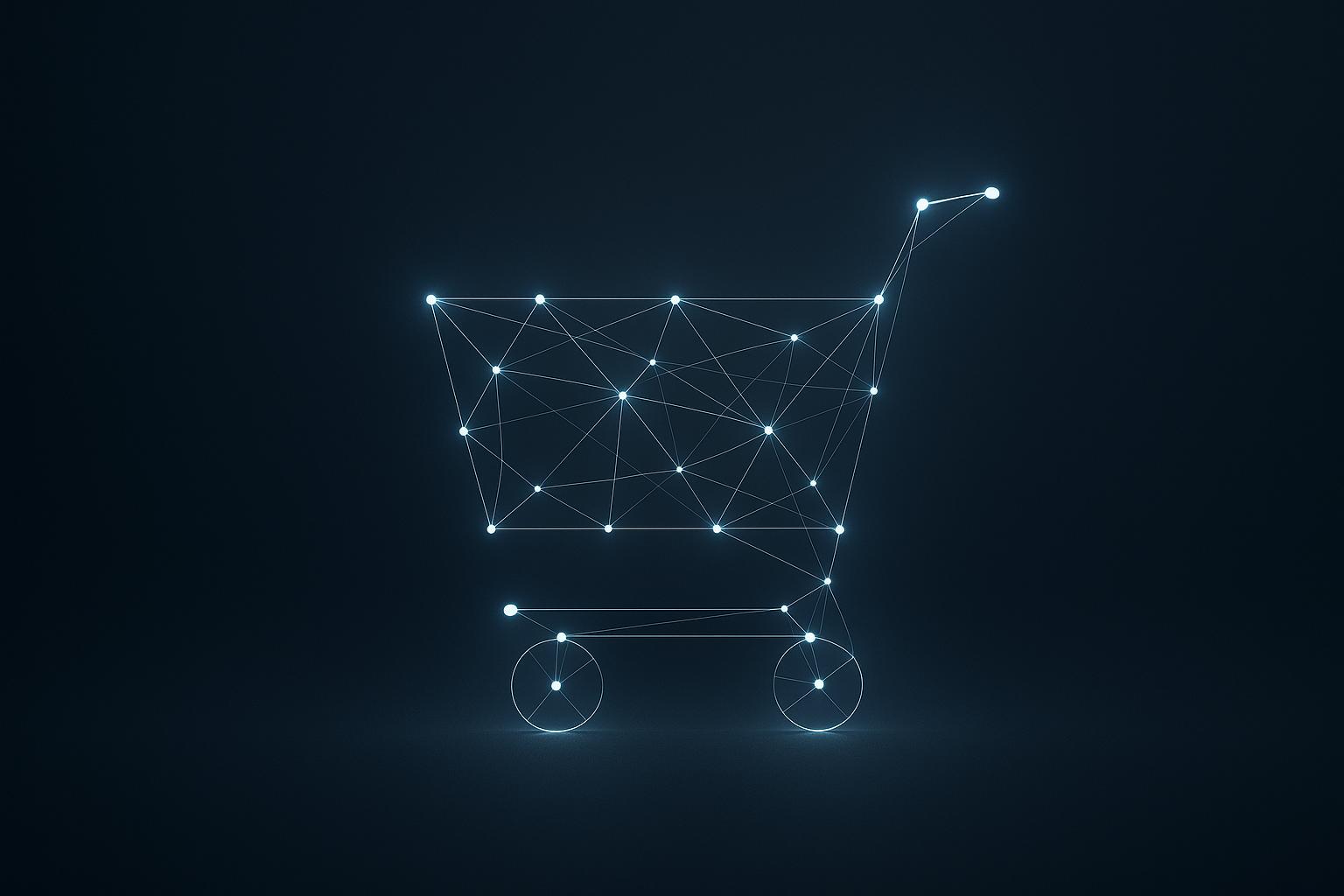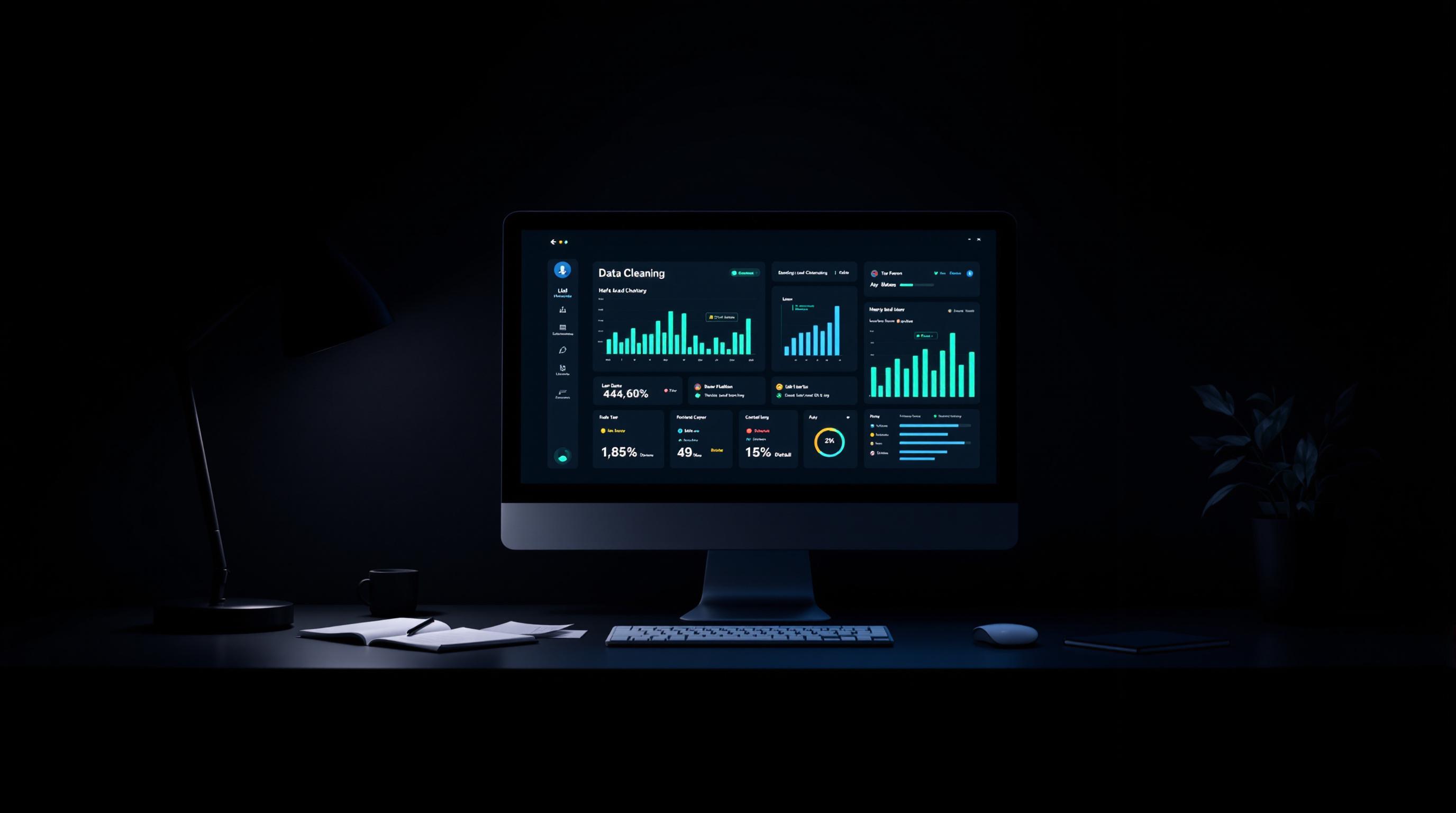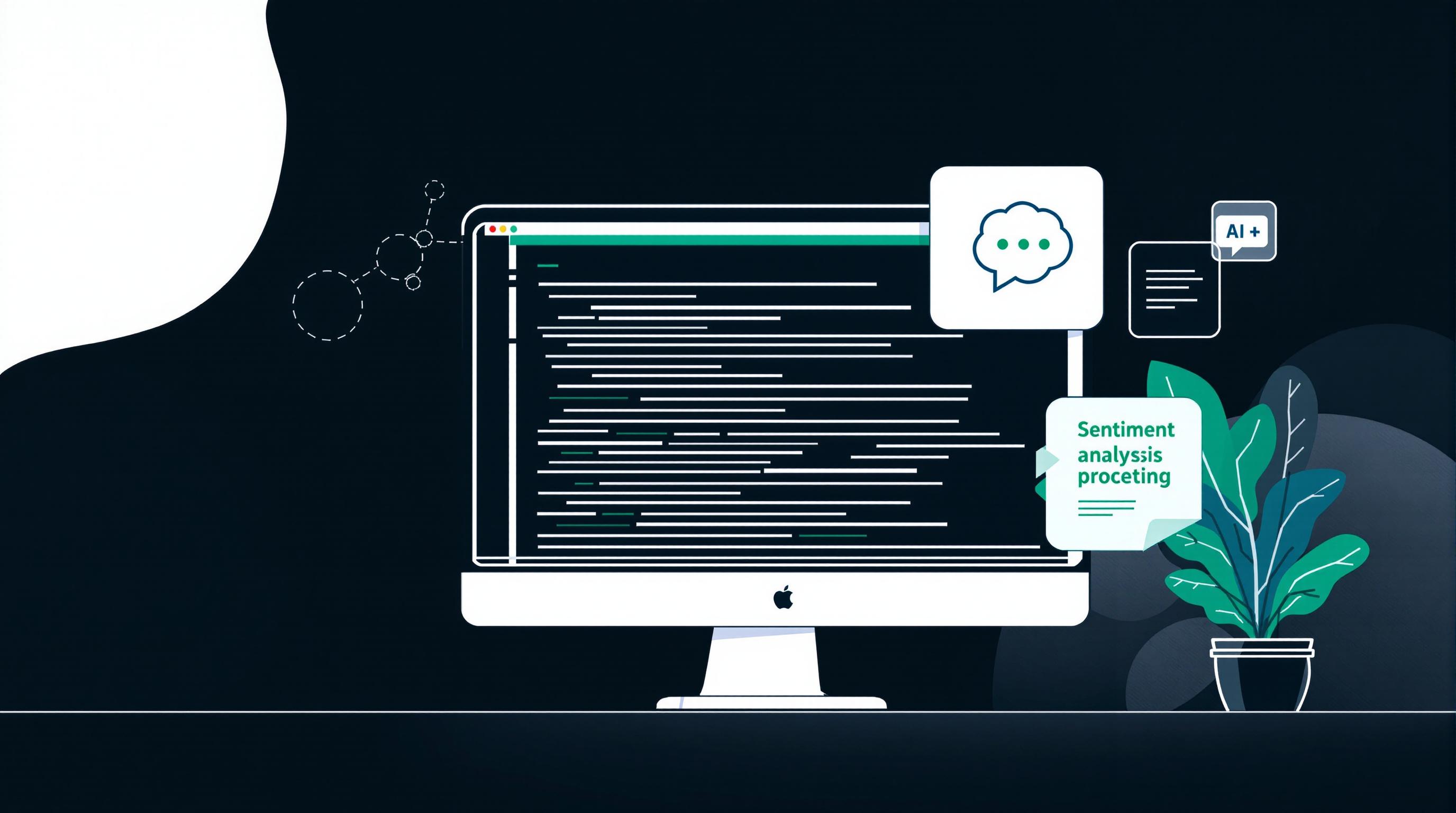Interactive dashboards combined with web-scraped data can transform raw information into actionable insights. Here's what you need to know:
- Why It Matters: Dashboards simplify complex data into visuals, and scraped data adds real-time updates, helping businesses monitor trends, pricing, and sentiment.
- Key Tools: Use web scraping tools like InstantAPI.ai (99.99% success rate, $10 for 1,000 scrapes) and dashboard platforms like Tableau, Power BI, or Python Dash.
- Challenges: Handle issues like data quality, source credibility, and format standardization with tools like Pydantic for validation and schema-based normalization.
- Steps to Build:
- Identify reliable data sources (e.g., APIs, government databases).
- Set up scraping tools for automated data collection.
- Clean and structure data for dashboards.
- Import data and choose effective visuals (e.g., line charts for trends, bar charts for comparisons).
- Add interactive controls like filters, sliders, and date ranges.
Quick Comparison:
| Tool/Platform | Best For | Key Features | Price Range |
|---|---|---|---|
| InstantAPI.ai | Web scraping | CAPTCHA bypass, rotating IPs | $10 for 1,000 scrapes |
| Tableau | Enterprise dashboards | Real-time updates, native connectors | $70–$120/user/month |
| Power BI | Microsoft integration | Excel-friendly, cloud collaboration | $10–$20/user/month |
| Python Dash | Custom dashboards | Open-source, highly customizable | Free |
Build Dashboards from Web Scraped Data
Selecting Scraping and Dashboard Tools
Choosing the right scraping and dashboard tools is key to creating dynamic visualizations that handle integration challenges effectively. These tools directly tackle the issues discussed earlier.
Web Scraping Tools Overview
Web scraping tools come with varying levels of functionality and user-friendliness. For example, InstantAPI.ai boasts a 99.99% success rate for data extraction. It offers both a Chrome extension ($15 for 30 days) and an API option ($10 for 1,000 scrapes), featuring JavaScript rendering and CAPTCHA bypass.
Here's a quick comparison of popular scraping tools:
| Feature | BeautifulSoup | Scrapy | InstantAPI.ai |
|---|---|---|---|
| Setup Complexity | Low | High | Minimal |
| JavaScript Support | Limited | Requires Setup | Built-in |
| CAPTCHA Handling | No | Manual | Automated |
| Proxy Management | Manual | Manual | Included |
| Free Tier | Yes | Yes | 500 pages/month |
Dashboard Software Options
The right dashboard software depends on your data's complexity and how often it needs updating. Here's a breakdown of some popular options:
| Platform | Best For | Data Integration | Price Range |
|---|---|---|---|
| Tableau | Enterprise analytics | Native connectors | $70-$120/user/month |
| Power BI | Microsoft ecosystem | Excel integration | $10-$20/user/month |
| Python Dash | Custom solutions | Direct coding | Free, open-source |
Tool Selection Criteria
When deciding on tools for your dashboard project, keep these key factors in mind:
- Data Format Compatibility: Make sure your scraping tool outputs data formats that can be easily imported into your dashboard platform.
- Update Frequency Requirements: Your tool should align with how often your dashboard needs updates - whether in real-time or at scheduled intervals.
- Technical Expertise Available: Match the tool's complexity with your team's skill level. For example, Dash is highly customizable but requires Python knowledge, while InstantAPI.ai offers a no-code solution ideal for non-developers.
Data Collection Process
Finding Data Sources
Start by identifying trustworthy websites that are updated regularly, have well-organized data, and clearly permit scraping. Reliable options include public APIs, government databases, and respected business directories - ideal for creating dashboards.
When assessing data sources, keep these factors in mind:
| Factor | Why It Matters | Example |
|---|---|---|
| Update Frequency | Ensures relevancy | Real-time stock prices vs. monthly sales reports |
| Data Structure | Simplifies extraction | HTML tables vs. unstructured text |
| Access Stability | Reduces interruptions | API rate limits, CAPTCHA presence |
| Data Accuracy | Maintains reliability | Primary source vs. aggregated content |
Once you've selected your sources, configure your scraping tool to automate the data collection process.
Setting Up Scraping Tools
After selecting data sources, it's time to set up your scraping tools. Platforms like InstantAPI.ai offer both a Chrome extension and an API for flexible data collection - whether you need quick manual extraction or automated programmatic solutions.
"After trying other options, we were won over by the simplicity of InstantAPI.ai's Web Scraping API. It's fast, easy, and allows us to focus on what matters most - our core features." - Juan, Scalista GmbH
Key features of InstantAPI.ai include:
- JavaScript rendering powered by headless Chromium
- Automatic CAPTCHA solving
- A pool of over 65 million rotating IPs
- Multiple output formats for flexibility
These capabilities make data extraction smooth and ready for immediate use.
Data Preparation Steps
Once the data is collected, it needs to be cleaned and organized for dashboard integration. InstantAPI.ai provides AI-driven tools to transform raw HTML into structured JSON objects, streamlining this process.
To prepare your data for dashboards:
- Define a schema: Standardize formats like dates (MM/DD/YYYY), numbers (commas for thousands), and currency ($XX.XX) to match your dashboard's requirements.
- Validate data quality: Look for missing values, duplicates, or inconsistencies to ensure accuracy.
The platform's output options are designed to work seamlessly with popular tools like Tableau and Power BI. After cleaning and structuring the data, it’s ready to be imported into your interactive dashboard.
sbb-itb-f2fbbd7
Creating Interactive Dashboards
Turn your cleaned data into an interactive dashboard by importing it, choosing the right visualizations, and adding controls for user interaction.
Data Import Methods
Importing your cleaned data correctly is the foundation of a successful dashboard. Different platforms offer various methods tailored to specific data needs:
| Platform | Recommended Import Method | Best For |
|---|---|---|
| Tableau | Direct Database Connection | Real-time data updates |
| Power BI | OneDrive Integration | Cloud-based collaboration |
| Python Dash | JSON/CSV Import | Custom visualization needs |
For Tableau, adjust settings to handle large datasets (e.g., more than 10,000 rows) and store files on cloud services like OneDrive or Google Drive for automatic updates. Once your data is imported, you can focus on selecting the most effective visualizations.
Chart and Graph Selection
Choosing the right visualizations is key to making your data insights clear and impactful.
For time-series data, line charts work well to highlight trends. Keep in mind:
- Limit the chart to 5–6 lines to avoid clutter.
- Start the Y-axis at zero unless focusing on a specific range.
- Use consistent time intervals on the X-axis for better readability.
For comparing categories:
- Use horizontal bar charts for long category names.
- Add value labels directly to the bars for quick comprehension.
- Keep stacked charts simple with no more than 2–3 series.
Adding User Controls
Make your dashboard interactive by adding user-friendly controls. These turn static visuals into dynamic tools for exploration:
-
Date Range Selectors
Allow users to examine trends over specific periods by creating dynamic time windows. Ensure labels are clear and formatted correctly. -
Categorical Filters
Use dropdown menus for variables like product categories or regions. Keep the options manageable to avoid overwhelming users while preserving functionality. -
Value Range Sliders
Add sliders for numerical data, such as price ranges (e.g., $0–$1,000) or ratings (1–5 stars). Clearly define the minimum and maximum values, and set logical step sizes.
When working in Tableau, configure filter actions thoughtfully. For example, set cleared selections to "show all values" to improve user experience. Use descriptive names for filters so they’re easy to understand in tooltips.
Dashboard Management and Updates
After creating a dashboard, keeping it updated and well-managed is essential to ensure your data stays accurate and useful. Building on the earlier data import and visualization strategies, regular updates help your dashboard remain a reliable tool for decision-making.
Automating Data Updates
Using InstantAPI.ai's Web Scraping API, you can automate your data updates seamlessly. The system refreshes data automatically based on how often the source updates - whether it's real-time market data or weekly reports.
| Update Frequency | How It Works | Benefit |
|---|---|---|
| Real-time | Direct API integration | Reflects changes immediately |
| Daily | Scheduled overnight updates | Ensures fresh data each morning |
| Weekly | Updates during low-traffic hours | Reduces system impact |
Fixing Scraping Issues
Website changes can disrupt your data flow, but InstantAPI.ai has you covered with its advanced scraping tools. Here's how it tackles common problems:
- Layout Changes: Automatically adjusts to new page designs.
- Access Restrictions: Uses built-in proxy management and CAPTCHA bypass to keep data accessible.
- Dynamic Content: Handles JavaScript-rendered pages to collect data from modern websites.
The system also sends alerts when issues arise, so you’re always informed. For more complex problems, the support team is available to assist. Once your data pipeline is stable, the next step is monitoring how users interact with your dashboard.
Tracking Dashboard Usage
Understanding how your dashboard is used can help you improve its performance and relevance. Key metrics to monitor include:
| Metric | What to Measure | Why It’s Important |
|---|---|---|
| View Time | Average session length | Shows how engaging your content is |
| Filter Usage | Most-used controls | Identifies the data users value most |
| Data Refresh | Load times and update success | Pinpoints performance bottlenecks |
Set up automated alerts to flag failed updates or major shifts in usage patterns. This proactive approach ensures your dashboard remains reliable and efficient. Plus, the pay-per-use model keeps costs manageable while scaling with your needs.
Wrapping Things Up
Key Takeaways
Interactive dashboards, fueled by scraped data, can turn raw information from the web into actionable insights. By combining AI-driven scraping tools with modern dashboard platforms, businesses can efficiently collect and use web data. With InstantAPI.ai's Web Scraping API, companies can automate data gathering from any site while ensuring accuracy and up-to-date information.
Here's a quick look at what this approach can achieve:
| Feature | Business Benefit | How It Works |
|---|---|---|
| Real-Time Monitoring | Stay on top of competitor pricing and market trends | Automated API integration |
| Workflow Integration | Effortlessly feed data into existing systems | Direct API connection |
| AI-Driven Analysis | Spot trends and analyze sentiment automatically | Built-in AI processing |
These capabilities provide a strong starting point for creating your first dashboard.
Steps to Get Started
Ready to dive in? Here's a simple guide to kick off your dashboard project:
- Start Small: Experiment with InstantAPI.ai's free tier, which allows scraping up to 500 pages per month. It's a great way to test the waters.
- Pick Your Tools: Choose dashboard software that fits your needs and expertise. Options like Tableau are great for visual analytics, while Python's Dash offers flexibility for custom setups.
- Create Your First Dashboard: Focus on a single metric, such as tracking market trends or analyzing customer feedback.
As your needs grow, you can explore upgraded plans or enterprise-level solutions for handling larger datasets. Remember, building dashboards is a process. Start small, gather input, and fine-tune your visualizations over time.


